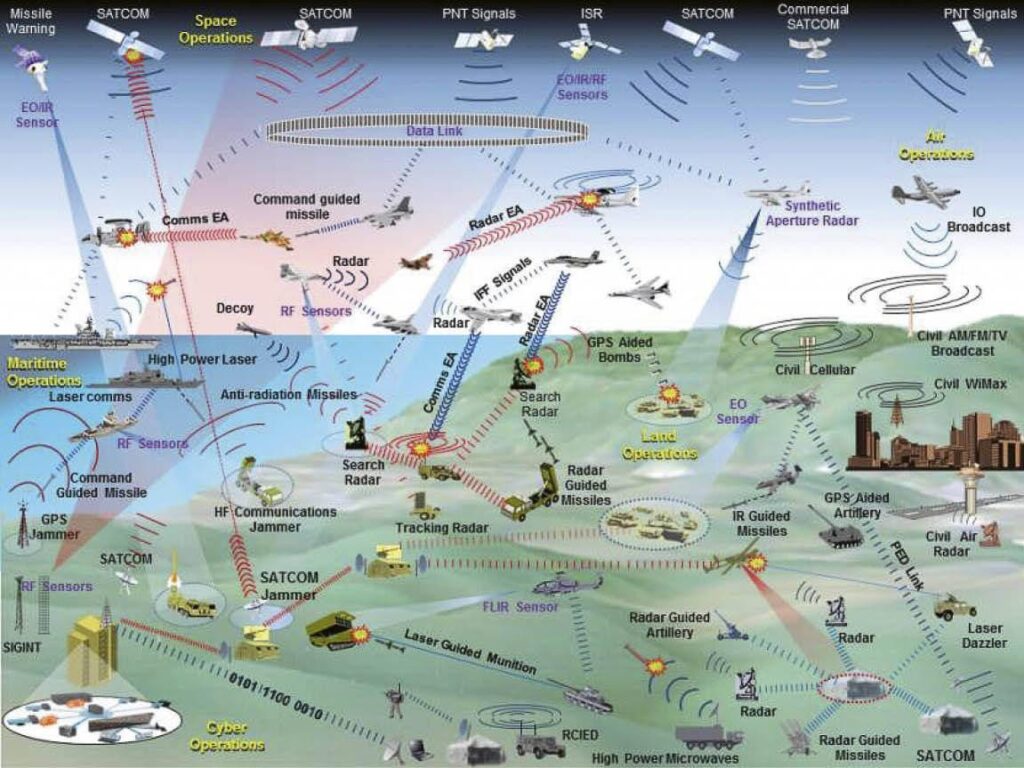In the high-stakes world of modern warfare, technology plays an increasingly integral role in military strategies and tactics. One nation that has been making headlines for its innovative approach to electronic warfare is Iran, particularly in its use of drones against its longtime adversary, Israel. In this article, we delve into the basics of electronic warfare and explore Iran’s drone strategy in its ongoing conflict with Israel, shedding light on the complex dynamics of this digital battlefield.
Understanding Electronic Warfare in the Context of Iran-Israel Conflict
Iran’s use of drones in electronic warfare against Israel has become a key strategy in the ongoing conflict between the two nations. These unmanned aerial vehicles (UAVs) are being utilized by Iran to gather intelligence, conduct surveillance, and carry out targeted strikes against Israeli targets. By leveraging advanced technology and sophisticated tactics, Iran aims to disrupt Israeli defenses and assert its influence in the region.
One of the main challenges for Israel in countering Iran’s drone threat lies in detecting and neutralizing the UAVs before they can inflict damage. To address this, Israel has deployed a range of electronic warfare systems designed to jam communications, disrupt guidance systems, and take control of hostile drones. By staying ahead of the curve and continuously adapting its tactics, Israel is working to minimize the effectiveness of Iran’s drone operations and protect its territory from potential attacks.
Overview of Irans Drone Strategy and Tactics
Iran’s drone strategy against Israel is a multifaceted approach that incorporates a variety of tactics to achieve their goals. One key component of their strategy is the use of electronic warfare to disrupt and neutralize enemy communication and radar systems. By employing sophisticated electronic jamming techniques, Iran is able to effectively blind Israeli forces to the presence and movements of their drones, giving them a significant tactical advantage.
Additionally, Iran’s drone strategy includes the use of swarm tactics, where multiple drones are deployed simultaneously to overwhelm enemy defenses. This allows Iran to saturate Israeli air defense systems and increase the likelihood of successfully penetrating their airspace. By using a combination of electronic warfare and swarm tactics, Iran has been able to mount effective drone operations against Israel, demonstrating their growing capabilities in the realm of unmanned aerial vehicles.
Challenges and Responses for Israel in Countering Iranian Drones
Iran has been utilizing drones as a key component of its military strategy against Israel, presenting significant challenges for Israeli defense forces. One of the main hurdles that Israel faces in countering Iranian drones is the sophisticated electronic warfare capabilities employed by Iran. These include jamming signals, spoofing GPS systems, and using encrypted communication channels to prevent detection and interception by Israeli air defense systems.
Israel’s Response: In response to these challenges, Israel has been investing heavily in developing advanced electronic warfare technologies to disrupt Iranian drone operations. This includes the deployment of electronic warfare aircraft, such as the Israel Air Force’s (IAF) F-35 Adir stealth fighters, equipped with cutting-edge electronic countermeasures to neutralize enemy drones. Additionally, the Israeli military has been enhancing its cyber capabilities to identify and disable Iranian drones before they can pose a threat to Israeli airspace.
Strategic Recommendations for Enhancing Israels Electronic Warfare Capabilities
One key strategic recommendation for enhancing Israel’s electronic warfare capabilities is to invest in advanced drone detection and jamming systems. Drones have become a significant threat to Israel’s security, with Iran utilizing them for surveillance and potential attacks. By implementing state-of-the-art drone detection technology, Israel can effectively identify and neutralize hostile drones before they pose a threat.
Additionally, Israel should focus on developing cyber capabilities that can disrupt and disable Iran’s electronic warfare systems. Through offensive cyber operations, Israel can target Iran’s communication networks, radar systems, and other electronic warfare infrastructure. By strategically disrupting Iran’s electronic capabilities, Israel can gain a significant advantage in the ongoing conflict. Regardless of the technological advancements made, it’s crucial for Israel to continuously adapt and innovate in the ever-evolving landscape of electronic warfare.
Key Takeaways
understanding Iran’s use of drones in electronic warfare against Israel provides a fascinating glimpse into the evolving tactics and technologies of modern warfare. As both countries continue to navigate complex geopolitical dynamics, it is clear that electronic warfare will play an increasingly important role in shaping the future of conflict. By delving deeper into the intricacies of this subject, we are better equipped to analyze and interpret the ever-changing landscape of international relations. Keep exploring, keep learning, and keep questioning – the world of electronic warfare is full of surprises waiting to be uncovered.
